These photographs have been reduced in size to about 1 1/2 inch x 1 inch to save space on the server and thus making it possible to add even more photographs for each area. If you see a photograph here that you would like a larger picture of e-mail Kathy Hamaker. I'd be happy to e-mail you the photo file so you can print it out on your computer. If you have any photographs in your possession that you would like to donate I'd be happy to add them to the webpage. Please do not ask me to send you all the photos in my collection. It isn't going to happen but I would be happy to send you five or six photos. With your mouse point to the picture you want and the photo file name should appear in a title box. Send me the file names for the photos you want or a description of the photo and I'll do my best to reply quickly. Thank you for your help.
 |
David Swan Crawford died in the U.S. Steel Columbia mine on 10 Nov 1948. He was crushed between trip cars and a stationary car. |  |
David Swan Crawford inside the Columbia Mine. |
 |
Mine rescue crew in Columbia prior to 1948. David Swan Crawford is third from left. |  |
Mine rescue crew in Columbia prior to 1948. David Swan Crawford is third from left. |  |
U.S. Fuel Co. 1916 Sunnyside Band. David Swan Crawford is in the front, second from the left and is wearing a funny little white hat. If anyone knows any of the other band players please contact Kathy Hamaker. Thank you. |
 |
Kula Mavrakis Francis in her Sunnyside Junior High school band uniform, about 1935, standing behind the house in Columbia. Photo donated by Kula Mavrakis Francis. |  |
Inside the mine. Photos donated by George and Thelma Mavrakis. |
 |
Inside the mine. Photos donated by George and Thelma Mavrakis. |  |
Inside the mine. Photos donated by George and Thelma Mavrakis. |
 |
Photos donated by George and Thelma Mavrakis. The photo appeared in the Sun Advocate, Price, Utah on Thursday, July 26, 1973 along with the names of the individuals. A copy of this newspaper article was donated by Don Butler. Almost a third of the men who posed for this photograph taken August 28, 1951 have passed away as well as the Geneva Steel Mine in Columbia, where they worked. All but six of this shift have been identified. They are: Front, left to right: Clarence Craig, Vard Rich, Sherman Polson, Frank Lee, Garen Whitlock, John Richie, Ike Evans, Tom Nickolovi, George Bell, Dan Stevenson Sr., George Stubbs, John Adams, Bernard Taylor, Ed Montoya, Lupie Quintana, Jack Perea, Archie Beveridge, (?), Jimmy Morris, Freeman Elliott; Leonard Rich Second row, left to right: Luke Brandon, Frank Puglajen, Willy Keener, Earl Lacy Sr., Joe Calley, Hugh Bailey, Fred Mooney, Bill Kennick, Joe Thomas, Tony Pacheco, Ben Coomer, Ed Alger, Arland Gumbrick, Dominic Poloni, Don Braby, Jack Pressett, Melvin Sharp, Howard Pierce Third row, left to right: Manuel Quintanna, Robert Swinburne Sr., Ray Link, Bill Quinn, Art Munn, Dick Taylor, Tom Holdaway, Bill Brandon, Tony Gallahagos, Floyd Seal, Earl Lacy Jr., Claude Lacy, (?), Premo Eckley, Robert Rasmussen, Wade Hill, Jim Zuball, George Trujillio, Joe Cruz, Claude Jones Top row, left to right: Victor Lipsey, Lee Barney, Joe Merchant, Don Allred, Elmer Menchow, Tom Coleman, George Cosellos, Pete Oviatt, Ralph Dominic, Henry Knorp, (?) John Katine, Ray Abata, Dean Peterson, Frank Coletti, Bob Beveridge, (?), (?), Paublo Jaramillo, (?), Homar Landram, Rheuban Jaramillo, (?). |
||
 |
This is Columbia about 1936. Photo was taken and was donated by June Stevenson and Don Butler. |  |
The School in Columbia |
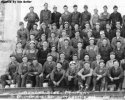  |
1955 Geneva Steel Day ShiftFront Row: ? Garcia, Mark Tratos, Ernest H. Stevenson, Warren Allred, James Wilson, Art Timothy, Merrill Jones, Oakley Bowden, Edward (Ned) Hansen, Ross Norton, Leon Stevenson, Stanley Rich, Melvin Stevenson. 2nd Row: Taliesin W. Evans, Edward Taylor, Tony Tangaro, Claude Adams, Allen Jones, Joe Nerone, Nick Guzzo, Mike Goniatakis, John Botanakis, James Doyle, George Douros, Ricardo Quintana, Earl Smith, John Crawford, Virgil Keith, Harry Shorty, William McDonald, Lester Rose, Mike Tratos, Tom Harvey, Mike Turnbull, Clyde (Mick) Campbell. 3rd Row: Kent Houskeeper, Warren Welty, W. E. (Woody) Keener, Georege Trujillo, John Keele, Frank Colette, Sidney Sorensen, Irvin (Ren) Cook, Tony Bonaquisto, Tony Pacheco, Walter (Woody) Julian, William Bitten, Alvin Rowley, George Zoolakis, Douglas Lindsey, James Gilbert, Carl Poglajen, Earl Rich, Levi Nelson, William Harris. 4th Row: Bernard (Barney) Michael, Premo Eccli, Delbert Zorn, Mike Fidell, Mike Trujillo, Manuel Escandon, Robert Swinburne, George Masterakis, Arcenio (Archie) Cruz, Tom Valdez, Raymond Abeyta, Elijah Gentry, Gerald Wilcox, Nick Marvidakis, Grant Christensen, Lyle Addy, Lewis Workman, Clarence Nelson, William Bradley, Feliberto (Phil) Gonzales 5th Row: John Bower, Eugene Martinez, John Perea, Lee Gatton, John Escandon, Herman Oviatt, Ollie Lindsey, Felix Mansanarez, John Roybal, Wm. Ward (Local President), Henry Colette, Clay Madsen, Joseph Harvey (Safety Engineer-later Superintendent), Joseph Nay, Cleatis Steele, Clarence Newland, Leigh Preston, Alexander Reifschneider, James Wilson, Frank Compagni, Byron Hixon 6th Row (Back Row): Jack Thompson, Lamar Safley, Mac Worley, Lee Worley, Vernon Rich, Tony Kremers, Jerry Lodeserto, Jose M (Mac) Archuleta, Jose C. Lopez, Tiofilio (Shorty) Gonzales, Pablo Jaramillo, Joe Pintar, James Tidwell, Kesley Nielsen, Dan Tamllos, Louie Ungaro, George Stubbs, Russell Curtis, Byrd Gordon. |
||
| Columbia miner with gas mask. | 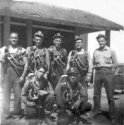 |
Columbia miners in 1947. Ruby Clarence Martin, standing, second from right: Sonny Fratto, standing on left, Joe Harvey, foreman standing on left later became General Mine Foreman and was Mine Superintendent at the time mine closed in 1967. | |||
 |
Columbia class photo taken in the 1920's. Dean Lewis is on the back row, third from right. |  |
Columbia class photo taken in the 1920's. Ross Lewis is on the front row, second from the right. |
 |
Columbia class photo taken in about 1928 Ross Lewis is in the middle row, fourth from the left. |  |
Columbia class photo taken in the 1920's. Dean Lewis is in the second row, 7th from the left with coveralls and hair slicked back. |
 |
Columbia class photo taken in about 1926. May Lewis is on the second row, 6th from the left. Mable Lewis is in the third row from the front, last one on the right. |
 |
Coal town of Columbia. This photo comes from the archives of June Stevenson. |  |
Looking north from Columbia coal town. This photo comes from the archives of June Stevenson. |
 |
Mine Tipple in Columbia. |  |
The winter of 1949 was a time of unusually heavy snowfall. While it didn't cause great difficulty at the elevation of the town, the accumulation at the mine portal which was 500 feet above the town level was more of a problem. |
 |
According to the old timers, the snow depth in the areas above the mine portal were as deep as they had ever remembered seeing. The trip from the tipple to the portal was getting to be of some concern. | 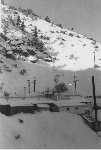 |
During a night in December the heavy accumulation of snow slid from near the top of the hill. Part of the shop and check station, along with a length of the haulage track were buried by the slide. |
 |
Fortunately there were no injuries but it was obvious that the job of clearing the track was going to be a lenghty one. |  |
The roof of the ship was largely intact but the uphill side of the building suffered some significant damage. |
 |
The clearing of the snow was virtually all hand work and the cold made for a longing of the shelter of the underground. |  |
At the beginning the task at hand seemed almost impossible. |
 |
After several shifts of mining snow they were about ready to start hauling coal. |  |
Underground hoist at Columbia Mine. |
 |
Rerailing cars that split the switch at the bottom of tram to the tipple. | 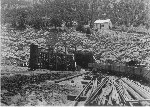 |
Columbia Mine Rock Tunnel |
 |
Columbia Mine Rock Tunnel |  |
Deputy Sheriff Bill Lines investigating the broken lock on a blasting powder storage bunker at Columbia Mine. |
 |
McKean's House | 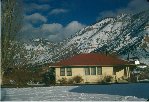 |
Roberts' House |
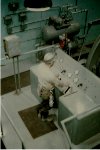 |
Hoist operator at control panel of underground hoist. April 1953 |  |
Winter scene to the north of Columbia |
 |
This photo is of a group of the senior employees of Columbia Steel in Columbia. Melvin Sharp and Frank Hicks were presenting some recognition on behalf of U.S. Steel after they took over the operation of Columbia. Included in the photo are: Back row L to R: Melvin Sharp, Trattos, Clyde Roberts, ? Front row L to R: Ed Braby, Mike Botonakis, William (Bill) Harris, Frank Hicks, Lou Reynolds, Albert (Bert) Kimber. |
||
 |
This self contained roof bolting machine was designed by Frank Gleason, master mechanic at the Horse Canyon Mine, for use in the twelve foot thick coal seam at Columbia. It had it's own air compressor and pressure tank and was complete with dual controls on the platform and at ground level. | ||
 |
Columbia Band - First, Second & third grades left to right: Ginger Dubois, Carole Taylor, Alberta Kimber, Alberta Royball, ______, Charles Compagni, Donald McCourt, Jed McKean, Toni Bonaquisto, Mrs. Kathrine Strate, John Perea, Alice Griego or Mary Martinez, Bruce Sharp, _____, Albert Roybal, Michael Candelaria, Frankie Mayo, Janet Gunderson. |
||
 |
Columbia was typical of mining towns designed in the early twentieth century. An area was set aside for the company mangement team to live. In Columbia, the Circle was that area. This was the way it appeared in 1948. Starting on the left, the families that lived there were Veltrys, Roberts, Sharps, McKeans, Strates and Crawfords. | ||
 |
The mine superintendents house was a spacious dwelling with a formal living room, a dining room, a large kitchen with a breakfast nook, two large bedrooms and a full bath upstairs and two bedrooms with private baths downstairs. The Harveys were the first occupants and the O'Connors were there until 1948 when Sharps moved in. In the early fifties, the company sold their houses to the occupants and Sharps purchased the house. They lived there until 1957. | ||
|
|||
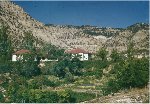 |
View of the garden and the circle from the southwest corner. |  |
Superintendent's house in the summertime. |
 |
The lower pool area and lower lawns, as seen from the back porch window. |  |
The lower pool in winter. |
 |
The overwhelming cliffs of Columbia. |  |
Columbia grown cabbage, swiss chard and tomatoes. |
 |
The vegetable garden approximately 1/2 acre in area. | ||
 |
Boarding House photo taken in July 2004 |  |
Boarding House photo taken in July 2004 |
 |
Post Office photo taken in July 2004 |  |
This is a picture of a picture of Horse Canyon Mine and buildings. The original picture was taken before 1990 when the mine buildings were destroyed. The red building in the photo are still in Horse Canyon. The following pictures show how they look today. Photo takne 28 August 2010. |
 |
Remaining buildings at Horse Canyon Mine. Photo taken 28 June 2010. |  |
Inside the remains at Horse Canyon Mine. Photo taken 28 June 2010. |
 |
Inside the remaining buildings at Horse Canyon Mine. Photo taken 28 June 2010. |  |
Remaining buildings at Horse Canyon Mine. Photo taken 28 June 2010. |
 |
Bulletin board inside mine buildings. Sign reads, "Geneva Coal Mine Safety Division, This Department has worked ___ Days without a lost time accident." Photo taken 28 June 2010. |  |
Inside the remaining buildings at Horse Canyon Mine. Photo taken 28 June 2010. |
 |
This photo shows rows of storage spaces in the warehouse. Photo taken 28 June 2010. |  |
Remaining buildings at Horse Canyon Mine. Photo taken 28 June 2010. |
 |
Remaining buildings at Horse Canyon Mine. Photo taken 28 June 2010. |  |
Inside the office building. Photo taken 28 June 2010. |
 |
Inside the office building. Photo taken 28 June 2010. |  |
Showers used by the miners. Photo taken 28 June 2010. |
 |
Remaining buildings at Horse Canyon Mine. Photo taken 28 June 2010. |  |
Remaining buildings at Horse Canyon Mine. Photo taken 28 June 2010. |
 |
Remaining buildings at Horse Canyon Mine. Photo taken 28 June 2010. |  |
Remaining buildings at Horse Canyon Mine. Photo taken 28 August 2010. |
The following photos have been donated by Eldon Miller to the Carbon County Historical Society and the Carbon County UTGenWeb webpage. These photographs have been donated to Eldon Miller by many different sources. If you donated them to Eldon and would like your name to accompany the photograph please e-mail Kathy Hamaker and I'll add it. Special thanks goes to Michael Francis for scanning the photographs so they could be added to the webpage.
 |
A group of students standing in front of the Columbia School. |
These photographs have been reduced in size to about 1 1/2 inch x 1 inch to save space on the server and thus making it possible to add even more photographs for each area. If you see a photograph here that you would like a larger picture of e-mail Kathy Hamaker. I'd be happy to e-mail you the photo file so you can print it out on your computer. If you have any photographs in your possession that you would like to donate I'd be happy to add them also. Thank you for your help.
 |
Heiner was located two miles below the town of Castle Gate. It had a population of about 100 and boasted of having its own store, post office and one room school house. It was named Carbon, then changed to Heiner after the coal mine vice president - Moroni Heiner. (Discription and photo scanned from historical calendar created by Carbon County.) |
The following collection of photos was donated by Dan Wells. He father had a photo album showing the houses and comunity during the years of 1925-1932. These 8 x 10 photos was taken by the Vice-president of the mine and show the award winners for best yards, gardens and lawns for each year. Dan Wells donated this collection to the Carbon County UTGenWeb webpage. Thank you so much for your donation. If you would like copies of these photos please e-mail Kathy Hamaker. Additional photos from this collection can be found in the Hiawatha photos and Mohrland photos
 |
L. E. Cameron Second prize - lawns Sept 1925 |
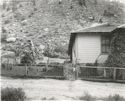 |
L. E. Cameron Second prize - lawns Sept 1925 |
 |
First Prize - Flowers 1926 |
 |
First prize - flowers 1927 |
 |
Second prize - Gardens 1927 |
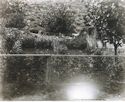 |
Second prize - Sweepstakes 1927 |
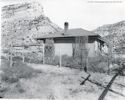 |
Martin Perrero First Prize - Gardens 1928 |
 |
Ivan Wall First prize - flowers 1929 |
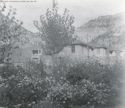 |
Ivan Wall First prize - flowers 1929 |
 |
Martin Perrero Second Prize - gardens 1929 |
 |
August Bianco Third prize - flowers 1930, 6th annual contest |
 |
Martin Perrero First prize - gardens 1930, 6th annual contest A man is in the photo |
 |
J. M. Aime Third prize - lawns 1931 |
 |
J. M. Aime Third prize - lawns 1931 |
These photographs have been reduced in size to about 1 1/2 inch x 1 inch to save space on the server and thus making it possible to add even more photographs for each area. If you see a photograph here that you would like a larger picture of e-mail Kathy Hamaker. I'd be happy to e-mail you the photo file so you can print it out on your computer. If you have any photographs in your possession that you would like to donate I'd be happy to add them also. Thank you for your help.
 |
"The original Peerless Coal land was located in Sections 10 and 15, Township 13 South, Range 9 East, Salt Lake Base and Meridian. It was situated on an "arrowhead" shaped mountain point that juts out toward the East - toward Helper, Utah. It is encountered on the right as one goes west - up Spring Canyon. It is bounded on the north by Hardscrabble Canyon. The townsite is the first one you come to as you go up the canyon. There is nothing left of the town now, although some small concrete piers which were part of the tipple foundation are still there - to the left of the highway. To me, every coal mine has not only a story, but also a distinct personality. It is discovered, is born, lives and dies." by A. Phil Cederlof, General Manager, Peerless Coal Co. 1932-1953 (Description and photo scanned from historical calendar created by Carbon County.) |